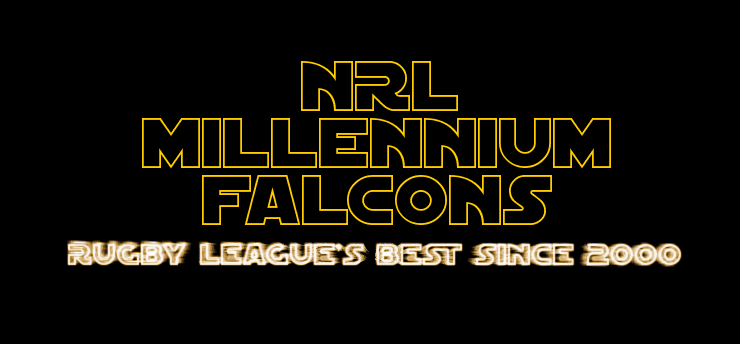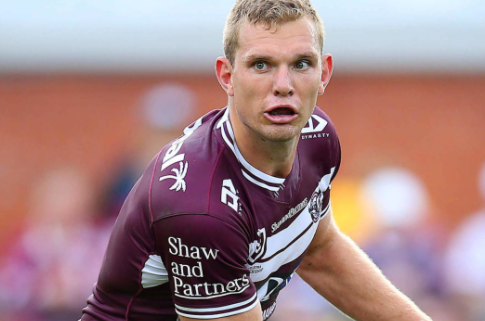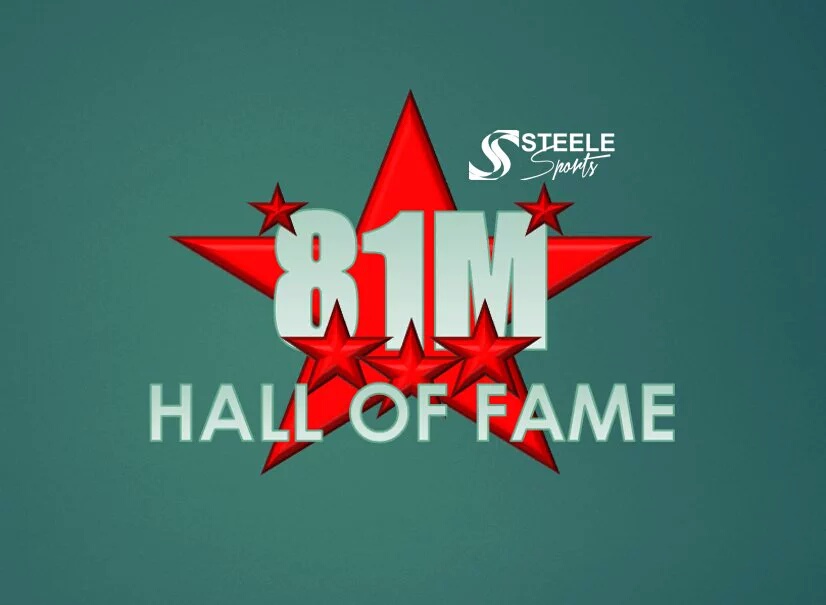The following is an extract from Steve Mascord’s Two Tribes available here.
Use the code ’81stminute’ to receive £1.99 or $2.50 off!
ON the first day of the Super League World Nines in Townsville in 1997, colleague Tony Adams asked me in the press box if there were “pornos” available in my South Bank hotel room. “No,” I answered, “but I think they make them there.”
The comment made the next day’s paper, as did the ground announcer describing the executive director of the new “World Board” – each member of which showed up to a meeting that weekend in Super League-issued Hawaiian shirts – as “Boris Lindsay”.
As the press pack was making its way down to the dressing rooms after a match on the final day of the tournament, the same ground announcer boomed over the public address: “To the correspondent from the Sunday Mail, I did not describe Maurice Lindsay as Boris Lindsay yesterday!”
Super League kicked off in Australia with a tropical holiday, complete with video referee stuff-ups and visits to the Santa Fe Gold strip club. See my review from the Sydney Morning Herald in these pages.
For the second year in a row, Australia failed to even make the final – something they only managed in a full scale international Nines tournament for the first time in 2019.
“We took it seriously – we were there to win it,” says the Kiwis’ coach, Graeme Norton. “Great Britain beat us, which really helped us to reset. We hadn’t been beaten before (in Nines).”
Some of the World Board’s announcements on the Saturday, meanwhile, were a little on the optimistic side – an eight-team competition in Japan, “an increased focus on development in the US”- but also the introduction of a seven-tackle set after a turnover, and free coverage of the sport on US television.
The seven-tackle set is still with us today, as is the consistently unfulfilled ambition in the US.
Australia were eliminated 12-10 in the semis by New Zealand (“We flew at them. We probably didn’t give them a chance, actually,” recalls Norton, perhaps ignoring the flightlessness of kiwis), who went on to win the World Nines with a 16-0 final win over Western Samoa. The second Super League World Nines (the first had been held the previous year in Suva) attracted crowds of 10,530, 12,360 and 13,423.
“The idea is that it is to become the Melbourne Cup of north Queensland,” Ribot said at the time.
And, as mentioned previously, rugby league’s fourth official made a comical debut under referees boss Graham Annesley; Samoa’s Joe Galuvao was awarded a try on the Friday night even though Australia’s Michael Hancock clearly forced the ball in-goal beforehand.
“It was a complete stuff-up and it was my stuff-up, to make matters worse,” says Annesley now. “We’d gone down the path of making the video process very complicated and very technical.
“There was a thing that they nicknamed the yellow submarine because it was a whole bunch of equipment that came in a whole range of yellow boxes that was unpacked and put together.
“Effectively, what we had set up, with the technical advice that we received, was a mini television production suite. We were controlling our own replays, as opposed to the replays that came from the broadcaster. That was very complicated and what it did, of course, was completely distract any operator from what they were really focusing on, which was making the right decision.
“…because they were too worried – I was too worried – about trying to operate the technology.
“It was out of that trial in the Nines that we modified it significantly so we relied more on the broadcast feed than on our own feeds.
“But I remember distinctly having to go down to the pool area at Townsville behind the grandstand, in the Cowboys complex, and address the Australian players and apologise to them all.”
As an aside, consultant Eric Fleming believes the fact the Australians didn’t blow up publicly was down to cultural change he’d help implement.
“The introduction of the video referee was a complete disaster,” Fleming maintains. “The coach would go ‘you’ve got to give it a bit of time, it’s going to take some work. It’ll bed in’. No dummy spits. That’s because they (coaches) were involved in developing it. It was their baby.”
Another innovation in Townsville included the red zone being painted … red. They liked the idea so much in England that Salford adopted it without approval for a game against Wigan on April 25 of the same year.
Lindsay recalls: “I ran the original Nines which was in Fiji. I stayed in a crummy little hotel where the team was staying where the room was about as big as my balcony to the bedroom and I remember …. (International development officer) Tas (Baitieri) came in and he said ‘are you staying here?’.
“I said yeah. He said ‘fuck me mate, you’re chairman of the international board. I said ‘so what?’ I’m not about being a big shot’. He said ‘Arko wouldn’t do this, he’d march out’. I said ‘it’s just because they’re used to suites and all that. I don’t give a shit’.
“(In 1996) We had the Gary Connolly affair. Gary Connolly had taken the shilling and signed for the ARL.
“He went right up to changing for the game and they came into the dressing room and said ‘you can’t play’ and he was gutted. He just loved playing rugby, Gary. To cut a long story short, yeah I like the Nines. I like anything that’s a gala, anything that’s promoting rugby league.”
While a good time was had by all, “I can’t recall any significant atrocities taking place, which is quite unusual for those days,” Annesley says.
Two days after the Nines, one representative of each team – along with one each from the domestic Super League – fronted up for a launch at Sydney Showgrounds’ Hall of Industries which Paul Kind estimates cost $750,000 – making it the most expensive promotional event in the sport’s history.
“We constructed this giant globe,” Kind recalls. “It turned a bit like a mirrorball, it spun throughout the course of the night. It was the centrepiece.
“We built this 60-metre long … it was like a catwalk or runway and it was hidden behind a wall with the big ‘S’. For the speeches and the start of it, that was what you saw.
“Jon Stevens sang ‘Two Tribes’ and then the wall opened and this catwalk, this runway, lit up and the players started coming down in procession and they had their positions on the stage.
“Then Laurie (Daley) was the last one, representing Australia. So you had all the teams of Super League plus all the international teams. It was at a level of expense that the game wouldn’t even dream of today.
“All of those things had to be done. The thing with all that was ‘what are the ARL going to do?’ That was the theme of the entire key moments of the year – the ‘other league’.
“The approach taken by Super League was just to throw money at it, to throw money and make it deliver on its promise. It all came back to that.”
Roy Masters’ wrote of the night’s spectacle: “It employed thunderous music, laser beams, bow-tied dancers and slinky dressed women to demonstrate rugby league’s thong-and-singlet days are over.”
The news cycle continued to trundle along as the twin club seasons grew closer, all hope of compromise having evaporated. Another innovation out of division: Lebanon fielded its first rugby league team in the ARL Sevens.
That tournament – a week after the Townsville event – was won by Parramatta, who beat North Sydney 32-22 in the final. The Eels had to get past those well-supported Lebanon Cedars, however, in the quarters.
An ARL Melbourne team featured former Sydney Swan Leon Higgins and sprint champion Shane Naylor. Inevitably Higgins kicked for Naylor who chased, on the Saturday. Sure enough, Naylor arrived first – and dived straight over the ball.
One of the banners in the crowd read “$uper League $ux”.
The pre-season was sometimes chaotic; the Mariners were left with the prospect of living up to their name when a plane that was supposed to take them back to Newcastle after one trial was unable to land in Rarotonga, where they had played Perth.
But even this early in 1997, there was something weird happening in Newcastle.
On one hand, the club at the very centre of the community was broke. Newcastle Council demanded $138,000 in back rent from the Knights. On the other, when Nine said it did not want to televise the ARL’s pre-season Country Carnival, Newcastle station NBN stepped into the breach.
Also in the Steel City, a certain Andrew Johns was trying to kick-start his career in 1997 after – by his own admission – “going off the rails” the previous year at the tender age of 22.
“That dream soon ended in Coffs Harbour in a pre-season match against Manly when I tore the ligaments in my right ankle and had to have an ankle reconstruction,” he wrote in his biography.
“I missed the first 10 rounds of the competition and my replacement, Leo Dynevor, played out of his skin. There was talk that I was going to play reserve grade when I returned.”
Dynevor played 17 games that year, Johns only nine. “Leo was pretty instrumental in getting us where we got in the end,” recalls Knights doctor Peter McGeoch, “because in subsequent years we didn’t win a lot of games when Andrew wasn’t playing.”
Danny Munk has a favourite story about the pre-season. “We’ve got a trial game (in Queensland), (Club chairman) John Chalk is going ‘we can’t lose any players, we can’t embarrass the ARL. No-one can misbehave. Make sure you’ve got everyone’. No worries.
“So we played the game, my memory is the result wasn’t great. The boys went and had some dinner, had a few beers, everything was fine. I’m at the bus. ‘One, two, three, four… ‘Everyone’s on the bus and I thought ‘sensational, we’ve done this trial game, we’ve got everyone on the bus and we’re getting them back to the hotel. No embarrassing stories from us’.
“Mobile phone rings. It’s Chalky, going ‘how’d you go? Get everyone on the bus?’ ‘Yeah, yeah, everyone’s on the bus’. ‘You sure?’. I said ‘why are you ringing me?’
“He says ‘you fucking idiot, come back and pick me up’.”
Favourite to replace Arthurson, Queenslander John McDonald, told newspapermen he favoured a Super Bowl-style play-off between the winners of the two competitions at the end of 1997. Super League, meanwhile, had planned to give its 1997 premiership-winning coach the national post for the tour of Great Britain – Tim Sheens had coached them in Townsville – but that system was abandoned.
Use the code ’81stminute’ to receive £1.99 or $2.50 off!




